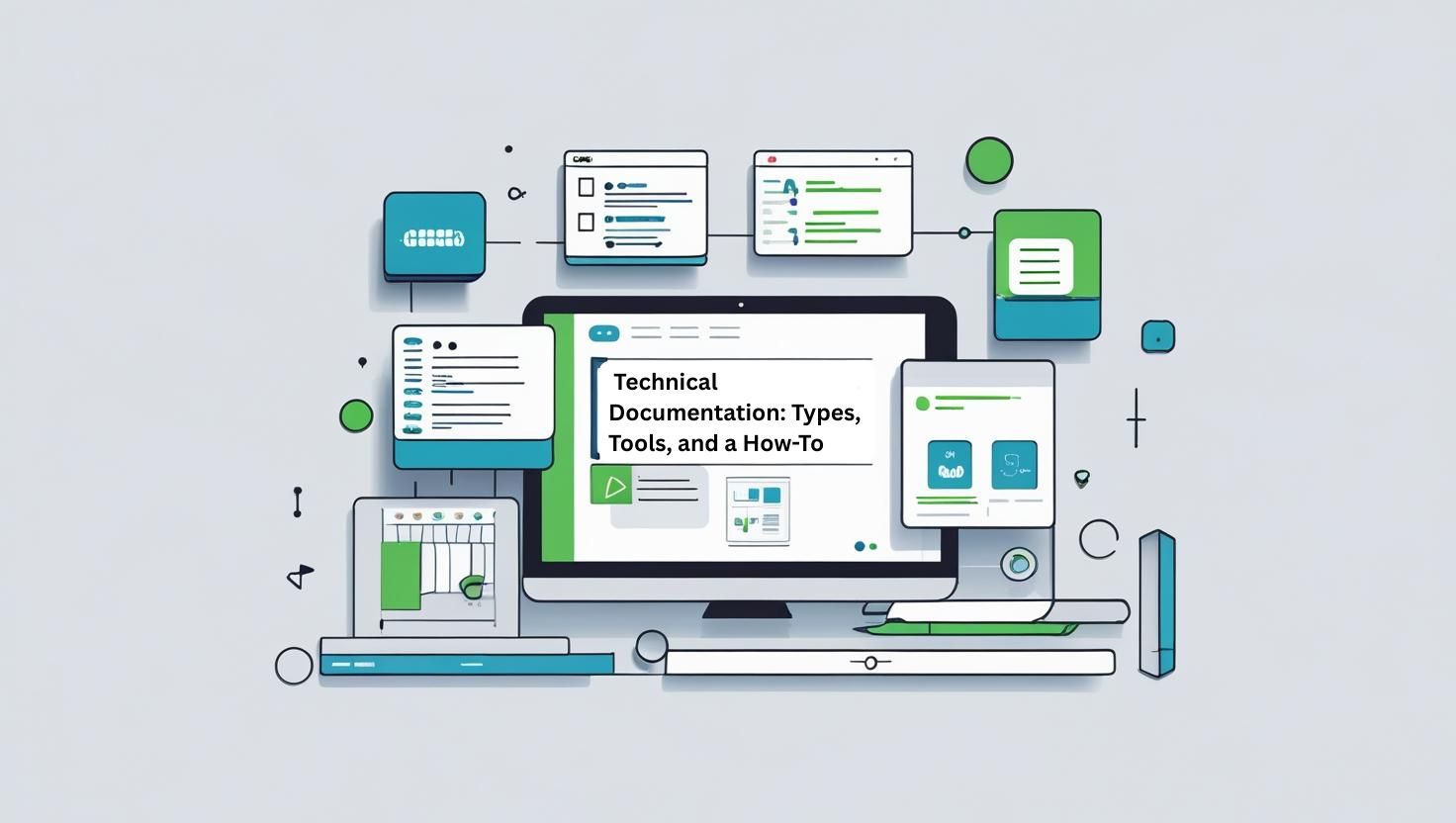
Technical documentation is often confused with more general “documentation.” In short, the former is a subset of the latter, but there’s more to it than that.
In this article, you’ll learn the distinction of technical documentation from its parent term, along with the who, what, and why of this important (and technical) communication tool.
What is Technical Documentation?
Technical documentation explains the function, design, or architecture of a product, system, or service. In tech, software, and product development, this documentation’s purpose is to ensure clarity, facilitate understanding, and enable effective use for various audiences, including users, developers, and internal teams.
Technical documentation differs from general documentation by focusing specifically on technical aspects, requiring specialized knowledge to create and often to fully comprehend, unlike broader, less specialized information.
With the help of a skilled technical writer, however, tech docs can often read nearly as easily as a general document as these writers know how to simplify the complex.
Why is Technical Documentation Important?
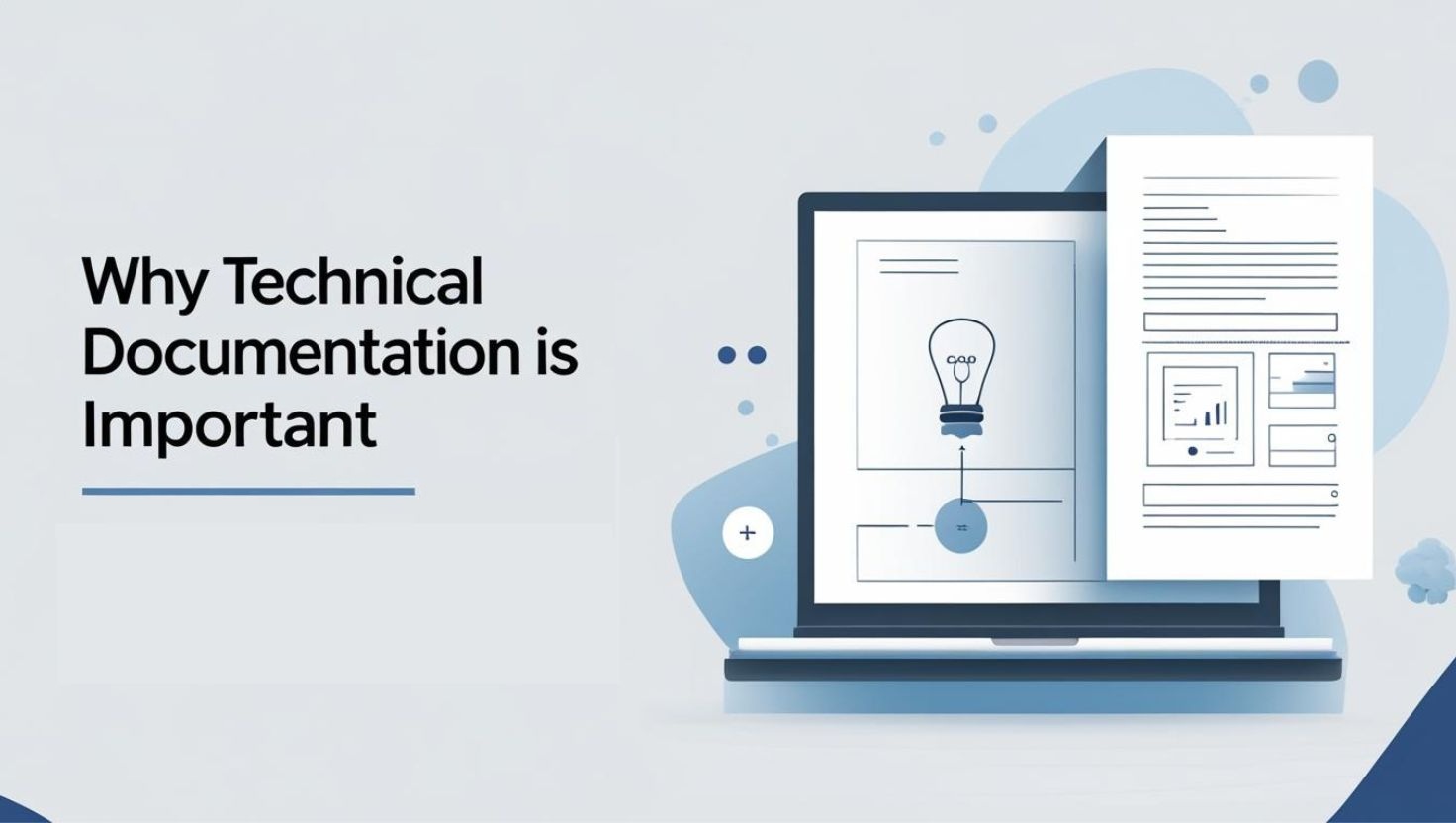
Technical documentation is strategically vital because it:
- Drives business impact. It reduces support costs by empowering self-service, accelerates user adoption, and ensures product understanding, leading to increased satisfaction and loyalty.
- Ensures compliance. It provides verifiable records for regulatory requirements and legal protection, reducing risks and fines.
- Enhances the user experience. It offers clear, concise instructions (e.g., user manuals, FAQs), making products easier to use and reducing frustration.
- Streamlines internal operations. It facilitates knowledge transfer (e.g., internal guides, process docs), boosts developer productivity, and simplifies onboarding for new employees.
- Improves support and training. It acts as a foundational resource for troubleshooting and enables efficient learning for both staff and customers.
Who Creates Technical Documentation?
Technical documentation is a collaborative effort, primarily authored or driven by:
- Technical writers. These are specialists in structuring, simplifying, and presenting complex information for specific audiences. They bridge the gap between technical details and user understanding.
- Engineers/developers. They provide the core technical knowledge and often draft initial content (e.g., code comments, design specifications).
- Subject matter experts (SMEs). These are individuals with deep expertise in a specific area (e.g., product managers, QA professionals, support staff) who ensure the accuracy and completeness of technical documentation.
Effective documentation involves continuous communication, feedback, and shared responsibility across these roles to produce accurate, user-friendly materials.
Who Uses Technical Documentation?
Technical documentation serves diverse audiences, both technical and non-technical, within and outside an organization.
Internal Teams
- Developers and engineers use API documentation, design specs, and internal wikis for building, maintaining, and troubleshooting.
- QA testers rely on test plans and specifications to ensure product quality.
- Project managers utilize project plans, requirements, and status reports for oversight and decision-making.
- Support and operations depend on knowledge bases and troubleshooting guides to assist users and manage systems.
External Users
- Customers/end users access user manuals, FAQs, tutorials, and quick-start guides to understand and operate products.
- Marketers refer to product specifications and feature guides for creating accurate marketing materials.
- Partners/integrators use software development kits (SDKs) and API documentation to integrate with products and services.
Types of Technical Documentation
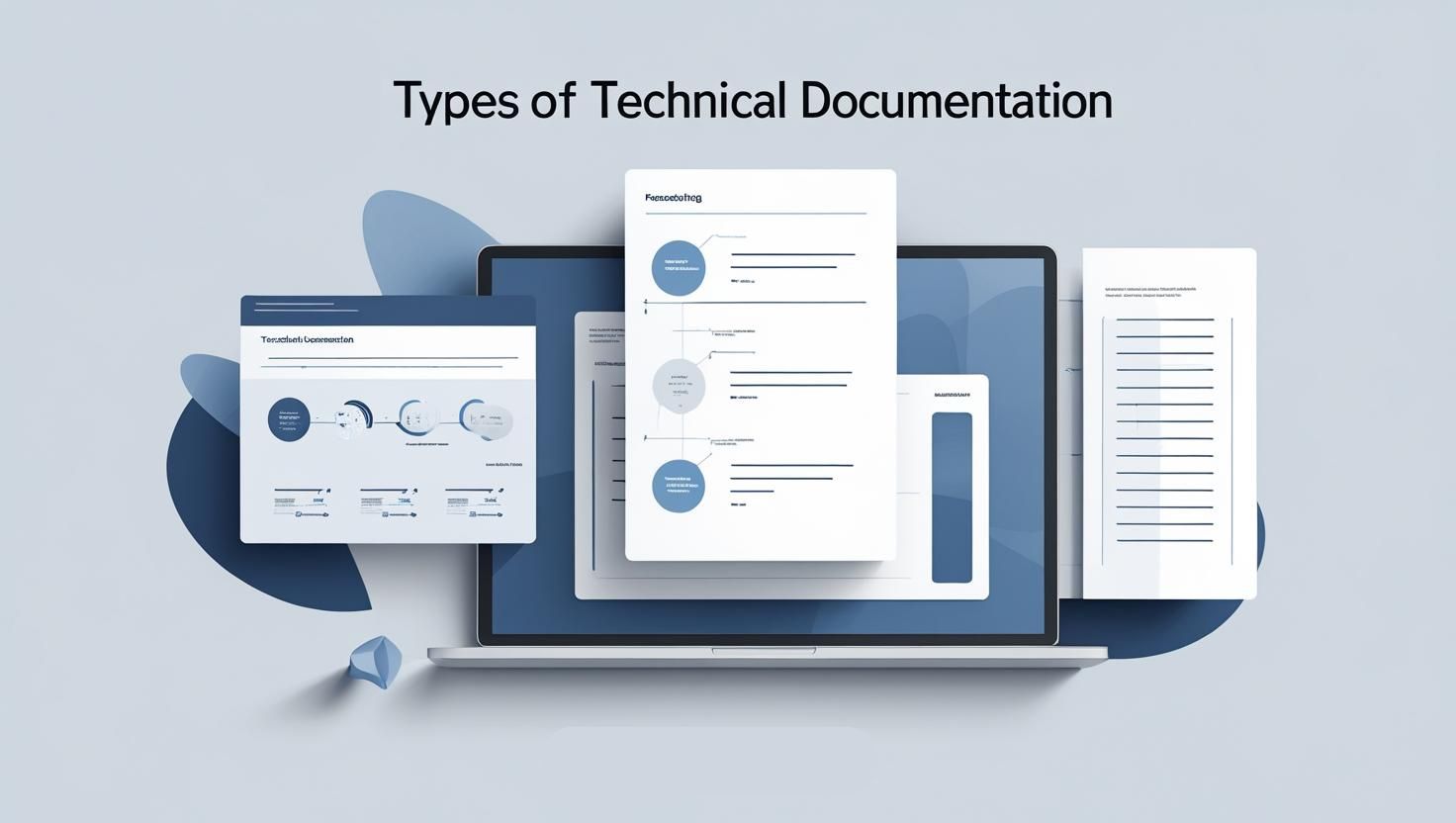
Technical documentation varies greatly based on its purpose and target audience. Here are three broad documentation categories with example documents.
User-Centered Documentation
This kind of documentation helps internal teams and end-users interact with a product. Here are a few examples:
- User manuals/guides provide customers with step-by-step instructions for product use.
- Troubleshooting guides help customers or support teams resolve common product issues.
- FAQs/knowledge bases answer FAQs for support teams (during customer interactions) or customers (for self-service purposes).
- Release notes detail changes and new features in product updates for customers and internal teams.
Developer-Centered Documentation
This kind of documentation assists developers in building, integrating, and maintaining systems. Here are a few examples:
- API documentation explains to developers how to interact with an application programming interface.
- SDK documentation provides developers with instructions and tools for using a software development kit.
- Code comments/internal docs explain to developers and engineers code logic and internal system architecture.
Operational Documentation
This kind of documentation guides internal teams on workflows, standards, and project specifics. Here are a few examples:
- Design specifications outline technical design and requirements to engineers and project managers.
- Test plans document strategies for product testing to QA testers and developers.
- Standard operating procedures (SOPs) detail prescribed methods for tasks to organizational, departmental, or project teams. Whether these procedures are technical in nature will depend on the subject.
Technical Documentation Lifecycle
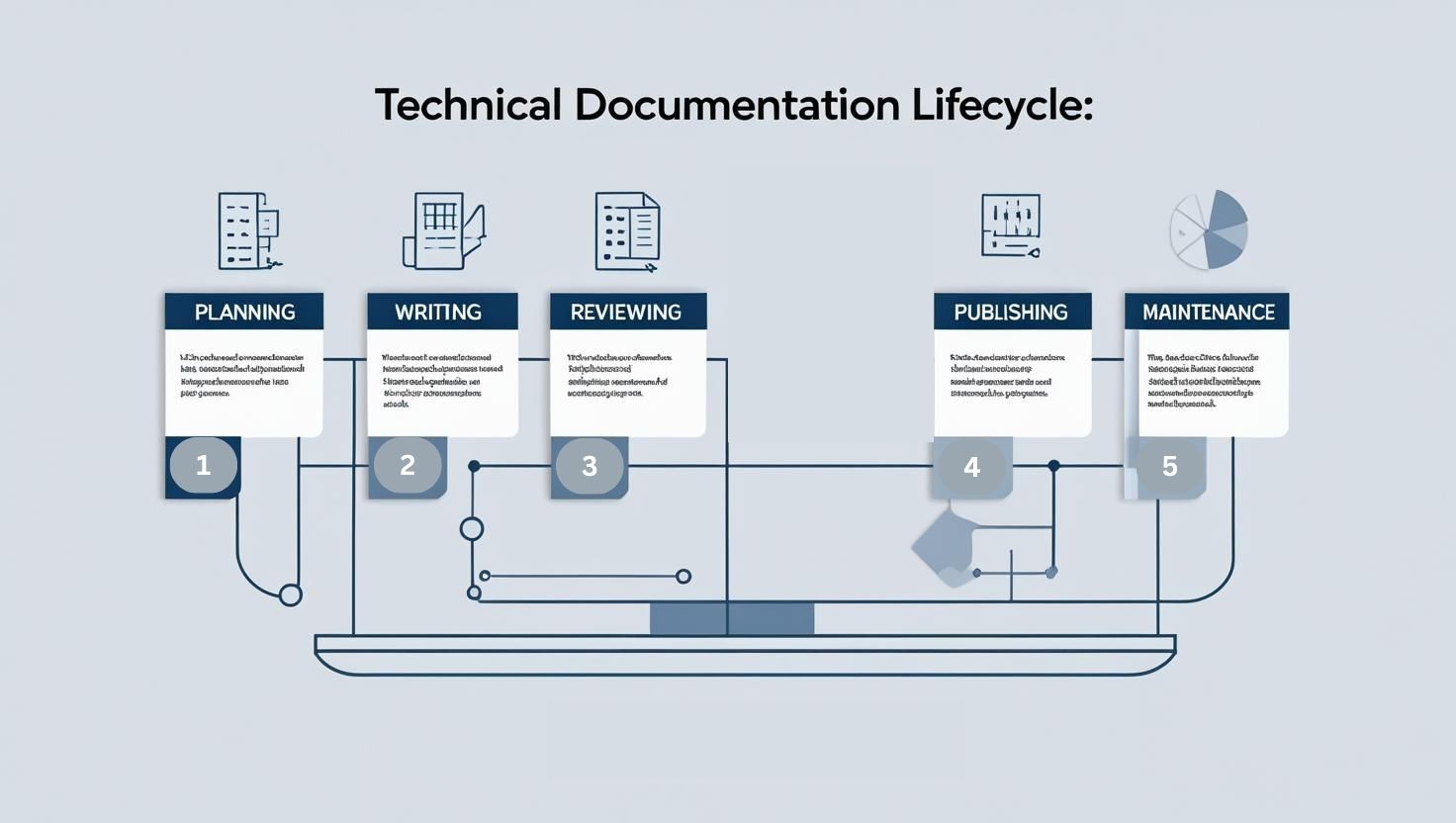
The technical documentation lifecycle is a systematic process for creating, managing, and maintaining technical documents throughout a product’s lifespan. Its key phases include:
- Planning. Defines the audience, scope, and requirements.
- Writing. Structures, writes, and illustrates the documentation.
- Reviewing. Ensures accuracy, clarity, and consistency.
- Publishing. Makes the documentation accessible to users.
- Maintenance. Updates and revises content as products evolve or feedback is received.
How to Create Technical Documentation
Creating effective technical documentation requires a structured approach, always keeping in mind the target audience and recognizing that collaboration with SMEs is important for a technically accurate piece.
Though the exact approach may differ between types of documents, here are a few general steps you can follow to create your own technical documents:
- Define audience and purpose.
Before writing, identify who will read the documentation (e.g., novice users, experienced developers) and why they need it (e.g., to install, troubleshoot, integrate). This dictates key content aspects such as depth, tone, and terminology.
- Gather information.
Collect all necessary technical details from SMEs, existing materials, code, and product specifications. Ensure accuracy and completeness by thoroughly researching the product or process.
- Structure and outline.
Organize the information logically. Use a clear hierarchy with headings, subheadings, and a table of contents to enhance navigability. Consider common structures like tutorials, how-to guides, reference material, or conceptual overviews.
- Write and illustrate.
Draft the content clearly, concisely, and consistently. Avoid jargon where possible or define it when necessary. Incorporate visuals such as screenshots, diagrams, and flowcharts to explain complex concepts and break up text.
- Review and edit.
Have SMEs review the documentation for technical accuracy and completeness. If not already involved, a technical writer or editor should then refine it for clarity, grammar, style, and adherence to established guidelines. Seek feedback from actual users to identify areas for improvement.
- Publish and maintain.
Choose an accessible platform or format (e.g., online knowledge base, PDF). Implement version control to track changes. Establish a regular review schedule to keep the documentation current as the product or system evolves, ensuring its ongoing relevance and usefulness.
Best Practices for Writing Technical Documentation
If you want to create impactful technical documentation, you can use best practices for general documentation like being clear and concise and organizing information logically. But here are a few other tips to keep in mind.
- Prioritize user empathy.
Always write from the user’s perspective, like with general documentation. Anticipate their questions and pain points. However, instead of just detailing features, explain why a user would need them and how they benefit from using them. This way they can better diagnose problems should they arise.
- Adopt structured authoring.
Implement modular content creation, breaking down information into reusable, self-contained topics. This boosts consistency, simplifies updates across multiple documents, and allows for personalized content delivery based on user needs.
- Embrace minimalism.
Strip away unnecessary words and jargon. Use plain language, short sentences, and active voice. Every word should add value; if it doesn’t, remove it to enhance clarity and readability.
- Integrate visuals strategically.
Don’t just add screenshots—use diagrams, flowcharts, and annotated images to explain complex processes or relationships that are difficult to convey with text alone. Visuals should complement, not just duplicate, the written content.
- Optimize for search and discoverability.
Structure content with clear headings and use relevant keywords naturally throughout. For online documentation, leverage metadata, internal linking, and SEO principles to make it easy for users to find the exact information they need quickly, reducing frustration and support inquiries.
Common Mistakes to Avoid with Technical Documentation
Even when you keep best practices in mind, you may still have missteps. Here are common pitfalls to avoid:
- Ignoring the audience. Writing for yourself or highly technical peers when the audience is non-technical leads to excessive jargon and complex explanations.
- Lack of structure/organization. Presenting information haphazardly makes it difficult to navigate, find specific details, or understand relationships between concepts.
- Outdated or inaccurate information. Failing to update documentation as products evolve causes confusion and a loss of user trust.
- Information overload. Including too much extraneous detail or overwhelming users with dense text hinders comprehension and causes frustration.
- Poor formatting and visuals. Neglecting readability through poor layouts, inconsistent styles, or inadequate/unclear visuals makes content difficult to consume.
Tools for Creating Technical Documentation
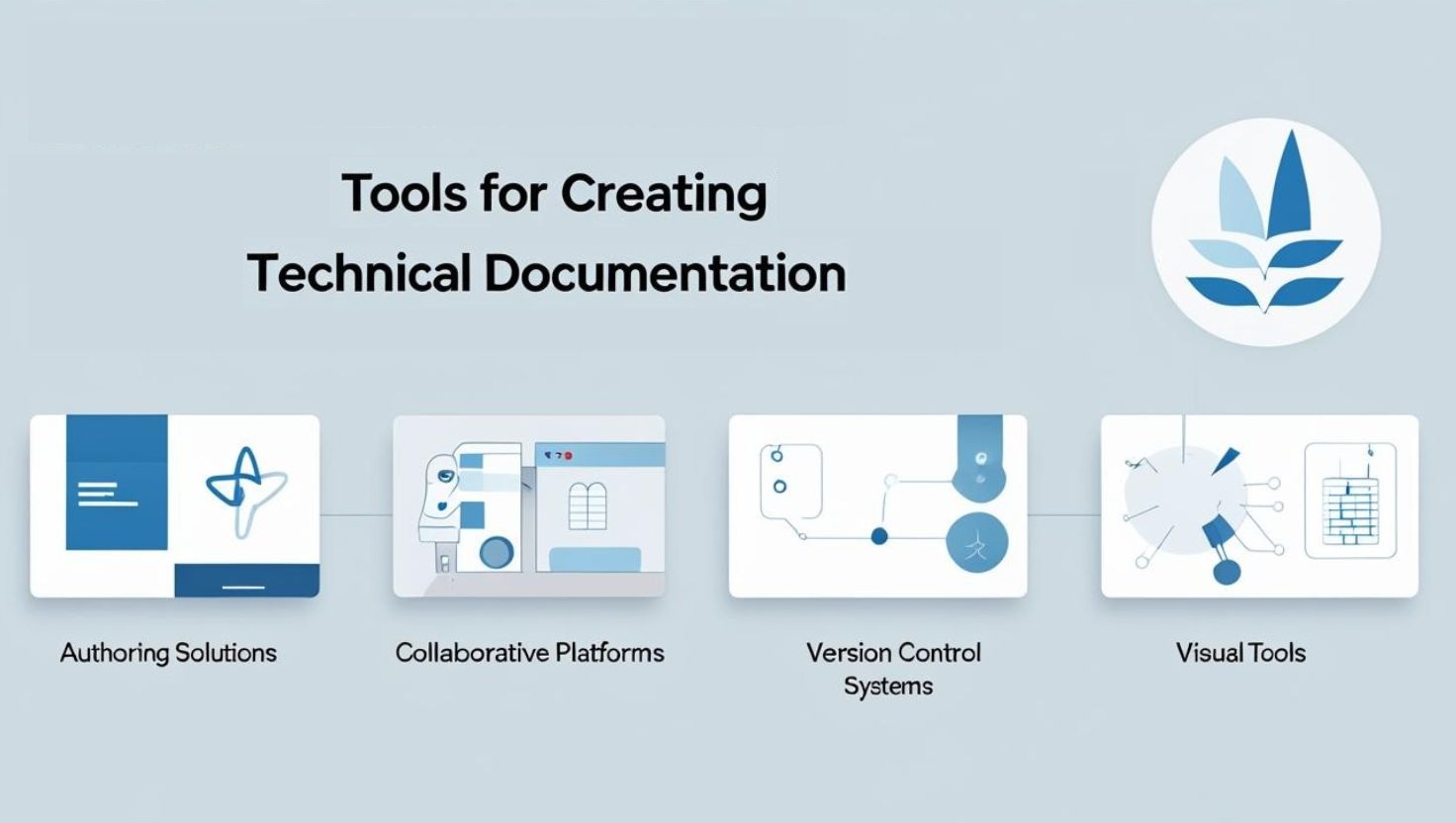
The best tools for technical documentation will be the ones that address your business and technical needs. Here are a few tool types with popular tool options to consider:
- Authoring solutions are text-based tools for technical writing. MadCap Flare is a popular, comprehensive authoring tool for creating and managing various types of technical content. It supports single-source publishing to multiple formats like HTML5, PDF, and print.
- Collaborative platforms facilitate teamwork and knowledge sharing. For example, Confluence is a widely used workspace by Atlassian that enables teams to create, organize, and share documents, meeting notes, and project plans with real-time collaboration features.
- Version control systems track changes and manage revisions of documents. Git is the industry standard. It’s a distributed version control system that allows multiple users to work on files simultaneously, track changes, and merge contributions efficiently.
- Visual tools enable you to create and annotate images, diagrams, and videos. Snagit from TechSmith is a mainstay among technical writers for capturing screenshots and screen recordings, then adding annotations, arrows, and callouts to clarify visual information.
Let EDC Do the Writing So Your Team Can Focus on Creating
Developers and engineers are great at what they do: coding, designing, and problem-solving. Ensure their time is focused on those key responsibilities by having an external partner like EDC create your technical documentation.
Our consultants have extensive technical writing expertise across multiple types of technical documents. They also have knowledge of common tools of the trade, so they can easily work with your tool of choice, whether that’s Madcap Flare, Adobe InDesign, Microsoft Word, or a similar solution.
Whether you need a single technical writer for an ad-hoc documentation project or a team of consultants to produce a complete line of documents, EDC’s technical documentation services ensure your organization receives the highest quality API docs, user guides, and the like.
Plus, our clients work closely with an engagement manager from one of our 30 local offices for the entire length of your project at no additional cost.
Contact us at (800) 221-0093 or [email protected] to get started with your technical documentation.
FAQs
What makes technical documentation different from user documentation?
While user documentation focuses on helping end-users operate a product, technical documentation targets developers, engineers, and internal teams with detailed specifications, architecture, and functionality explanations.
How do you choose the right format for technical documentation?
The right format depends on your audience and content type. Use structured formats like guides, API references, or flowcharts for clarity, and platforms like Confluence, Git, or MadCap Flare to manage them efficiently.
What is the best structure for writing technical documentation?
A good structure includes a clear hierarchy with an introduction, purpose, audience section, followed by how-to steps or references, supported by visuals and revision history for updates.
Which tools are most commonly used by technical writers?
Commonly used tools include Confluence for collaboration, Git for version control, MadCap Flare for multi-format publishing, and Snagit for visuals and screen captures.
Why is version control important in technical documentation?
Version control ensures documentation stays aligned with product updates, avoids duplication, enables rollback, and supports collaborative editing with full transparency.
What are common challenges in writing technical documentation?
Key challenges include managing fast-changing technical details, simplifying jargon for non-expert readers, maintaining consistency across documents, and gathering complete input from SMEs.
Read more about: What is documentation?
